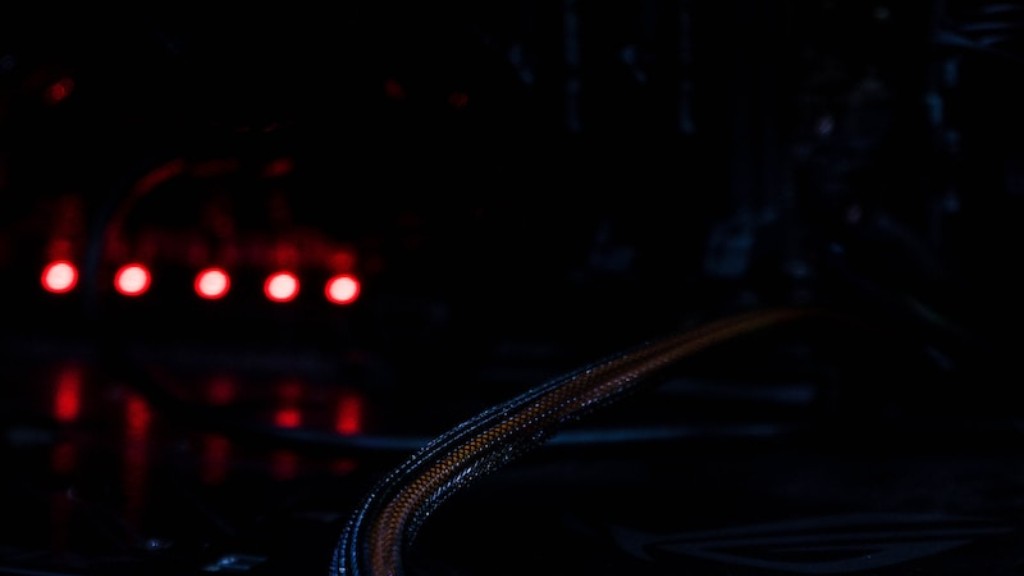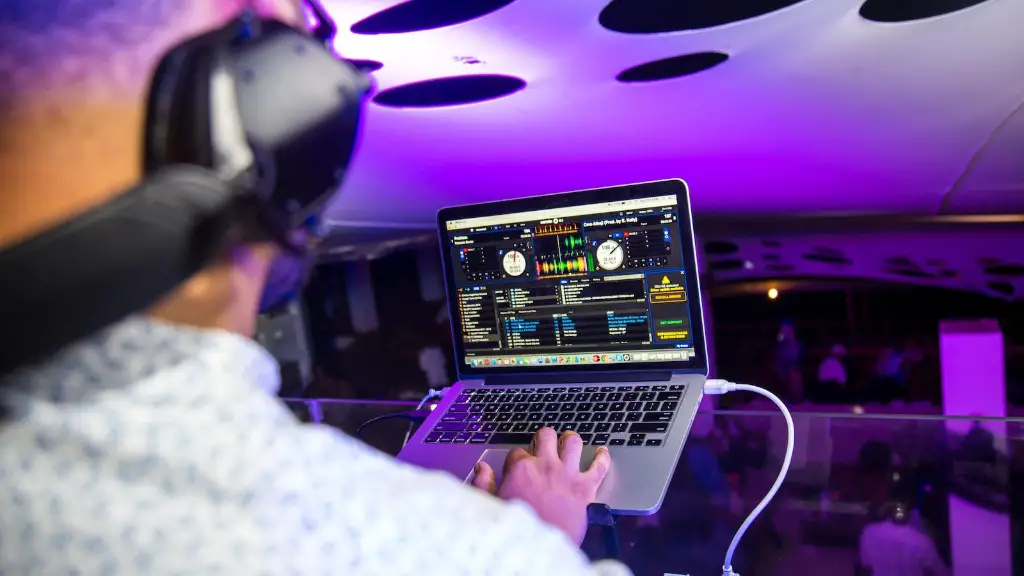Upgrading a computer from “crappy” to “gaming” is achievable with some patience and research. If properly implemented, one can make a substantial improvement while minimizing costs. This guide will explain a few simple and cheap tricks to help turn that flimsy, old computer into a respectable gaming machine.
The first step is to update the CPU processor. This is the most important component for gaming, as it determines how quickly the computer will be able to process games’ instructions. For most processors, it can be done by purchasing a compatible new chipset from the manufacturer and taking advantage of firmware and BIOS updates. Such measures will significantly boost processing power.
Next, upgrading the graphics card is a must. Since visuals are a key element of gaming, a good, powerful graphics card is essential. There are first-party options available, such as those manufactured by NVIDIA and AMD, but customers can also look at third-party options, like those from MSI and Gigabyte. When selecting a card, make sure to look at the power requirements to ensure it will fit into the computer.
Other hardware changes can also help, such as RAM upgrades, switching out old hard drives, and adding a solid-state drive. Adding more RAM or a hard drive will help ensure PCs that can run games faster, while an SSD can drastically reduce loading times. A solid-state drive makes a perfect choice for an OS drive, at which point any existing hard drives can be designated for additional storage.
Furthermore, software optimization is important. To ensure optimal performance from the hardware, it is beneficial to install the appropriate software and drivers. Making sure that your OS is kept up-to-date is hugely important as it relates to gaming performance, as well as keeping graphics drivers updated to ensure that games run as smoothly as possible. Lastly, customizing settings within the game itself can help maximize performance.
BIOS and Firmware Updates
For the budget gamer, a great way to improve the gaming experience is to perform BIOS and firmware updates. Those who spend the time to research and apply the appropriate software patches can reap the rewards of increased performance, increased compatibility, and improved stability. Before proceeding, it is important to understand that BIOS updates should be undertaken with extreme care, as missteps can lead to lost data, corrupted data, and potential hardware damage.
One example of a PC firmware upgrade is the Intel Management Engine, which enhances system control and increases system stability. This is especially useful for gaming purposes as it ensures that crucial elements like temperature control and energy management are properly handled.
The general rule of thumb with BIOS and firmware updates is to only upgrade when necessary, as both upgrades and downgrades can be perfomed if needed. To this end, it is important to research the product specifications in order to determine whether an update is required for the PC.
Armed with an understanding of the consequences and the benefits associated with BIOS and firmware updates, updating can be essential for turning a “crappy” computer into a gaming machine. Although the process may be daunting to some, with patience, practice and research, one will be able to pinpoint the hardware and software that is required to run games at full power.
Operating System Considerations
Optimizing the operating system is another way to squeeze more performance out of one’s computer. Operating system choices range from Windows to macOS to Linux, but for most gaming applications, Windows is the recommended choice. Therefore, it is important to make sure that one’s system is running the latest version of the OS. On Windows, updates can be done automatically via Windows Update.
Additionally, if the computer is running an older operating system, it may be beneficial to consider an upgrade. However, keep in mind that the OS upgrade process may require additional purchases, such as a valid license for the new OS or upgrade cards. For those on Windows 8, it may be worthwhile to upgrade to Windows 10 due to the improvements in performance and features.
One layer down from the OS lies the drivers, which are responsible for performing functions specific to the computer hardware. To ensure proper performance, it is important to install the appropriate drivers, as they often provide game-specific benefits. For example, NVIDIA provides users with game-ready drivers, which optimize the game experience for better performance. Alternatively, Intel’s Driver Update Utility can help users find the correct driver.
For those with a limited budget, a simple way to clean up the operating system is to utilize built-in tools such as disk cleanup. This will free up disk space and improve the overall system performance, allowing users to make a noticeable improvement to the gaming experience.
Using Cloud Services
Another way to enhance the gaming experience is to utilize cloud services. These services are widely available for PCs and can be used for various tasks. For instance, cloud storage services like Google Drive or Dropbox can be used to back up important game files, helping to ensure that data is safe even if the computer fails. Cloud-based gaming is also becoming increasingly popular, allowing gamers to access the same game across a variety of platforms.
Using a cloud service also makes game installation much easier. There are many game marketplaces that offer digital copies of games, with cloud services often offering additional features like streaming or cloud saves. Thanks to services like Steam and Origin, gamers can now access, purchase, and update their games without having to worry about physical media.
Finally, cloud backups can help gamers migrate their data without any worries. This means that the data can be transferred to and from any device with the use of the internet. This makes it much easier to move gaming data from one computer to another, reducing the hassle associated with transferring games from hard drives or discs.
Adopting the Right Hardware
Upgrading certain components of the computer provides major gaming advantages. For serious gamers, having the right hardware is essential, as it can dramatically improve response time and allow for superior gaming performance.
Trainy gamers often purchase mice and keyboards specifically designed for gaming. These peripherals usually come with customization options that allow users to adjust settings like polling rates, which can amplify the gaming experience. Other hardware upgrades, such as gaming chairs and gaming monitors, may be helpful for more serious gamers.
One potential way to improve performance is to purchase an overclocked processor. This process requires a great deal of understanding and knowledge, as overclocking does come with risks. Achieving the wrong overclock can cause major damage to a system, but when done correctly, it can lead to major performance boosts.
Water-cooled systems are another possibility for pushing hardware past its limits. This works by using a combination of liquid cooling and special radiators to maintain lower temperatures for faster processing. This can be quite expensive, but for PC gamers looking to take their gaming to the next level, it may be worth the investment.
Lastly, investing in a high-end power supply can help gamers reap the rewards of more expensive hardware. Top-tier power supplies can provide gamers with a stable and dependable power supply, allowing them to drive high-capacity components and reliably game on their PCs.
Cleaning up the Operating System
One of the easiest and least expensive ways to improve gaming performance is to clean up the operating system. This step involves optimizing the settings and doing away with unnecessary bloatware. Doing so can help free up disk space and improve system performance, enabling one to deliver smooth gaming experience.
The first step is to uninstall or disable all unnecessary software. This includes things like bloatware, startup items, and background processes. Removing unwanted software can help speed up the computer, as fewer programs will be running in the background. It also helps to reduce the amount of clutter that accumulates in the operating system, speeding up the PC.
Next, one should consider making some optimizations to the system settings. This includes disabling unnecessary startup items, turning off features like Windows search or Windows Defender, and changing the power plan from “Balanced” to “High Performance.” All these steps can be performed quickly and can result in a noticeable improvement in performance.
The third step is to defragment the hard drive. This process is designed to improve hard drive performance by re-arranging the data on the drive so that it can be read more quickly and efficiently. Over time, the data stored on the drive can become fragmented, making it slower and less efficient. By defragging the drive, the user ensures the data is orderly and can be read more quickly.
Finally, the fourth step is to optimize the graphics settings. This involves adjusting the various graphics settings in the game itself. Depending on the game, this can include altering settings like anti-aliasing and textures, which can reduce the graphical intensity and result in smoother gameplay.

